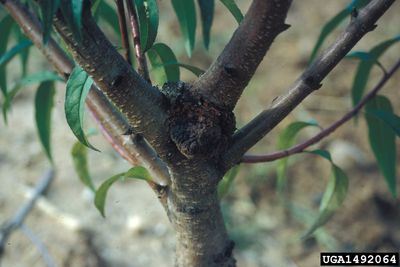What Causes Apricot Crown Gall?
Galls are very common distortions on a wide variety of plants. They may come from disease abnormalities or from an insect. In the case of the crown gall of apricot, the pest is actually a bacterium. There are no chemical corrections for the disease, but it can be prevented fairly simply. The bacteria responsible is Agrobacterium tumefaciens (syn. Rhizobium radiobacter). The bacteria live in soil and survives for many seasons. It may also be harbored in infected plant tissue, even dropped leaves. It spreads through water splashed from the soil and easily spreads. Infections are acquired through injury in the tree’s tissue. These may be from mechanical injury, animal damage, or insect activity. It often occurs at the plant’s graft wound but also as an after-effect of pruning. Wounds must be less than 24 hours old to be susceptible to penetration from the bacteria which causes crown gall of apricot.
Apricot Crown Gall Symptoms
If your tree has tumor-like protrusions, it may be infected. Apricot crown gall symptoms appear within 10 to 14 days from infection. The bacteria cause cells to form abnormally and result in overgrowth on the roots and crown of the tree. An apricot with crown gall produces soft, spongy galls, very different from galls that occur from other sources. Galls are up to 4 inches (10 cm.) in diameter and begin white and fleshy but age to tan in color. The bacteria’s action results in tissues that become disorganized and interrupt normal food and water distribution. Over time the tree will decline.
How to Treat Apricot Crown Gall
Commercial growers have access to a biological control, but it is not yet widely available for home gardeners. The best defense is to only plant certified disease-free plants. The disease is most prevalent in poorly drained, alkaline soil and where insect damage is possible. Plant and site selection, as well as crop rotation, are the most effective means of control. Prevent insect pests and rodent damage and provide good cultural care for a healthy tree that can survive the disease for years if it is accidentally introduced. It is important to prevent any injury to young plants as well, which are the most commonly affected.
